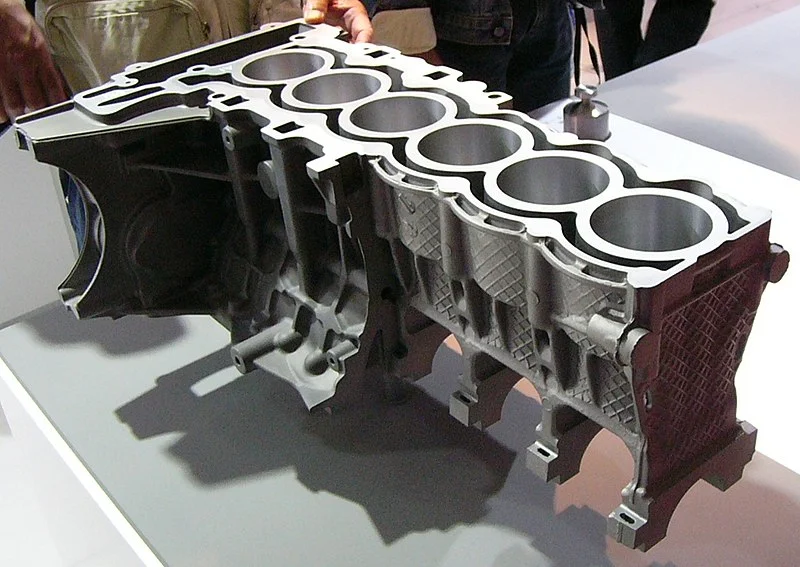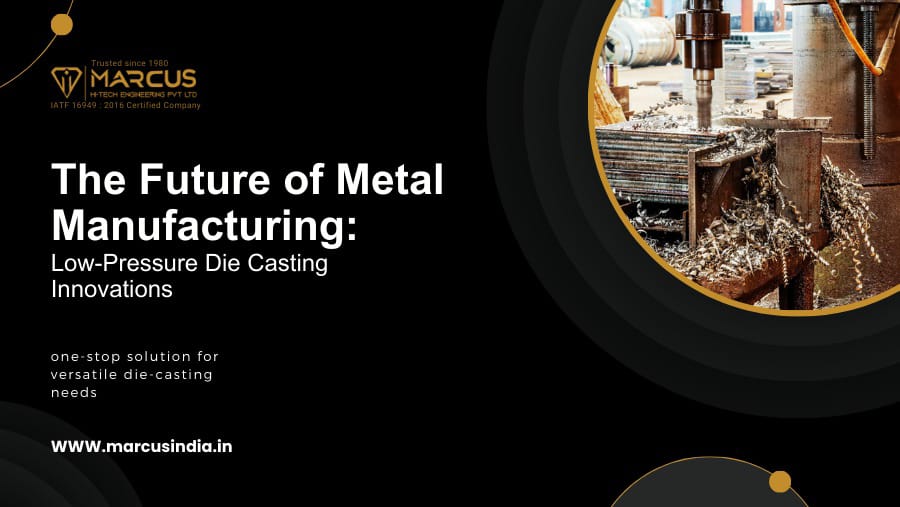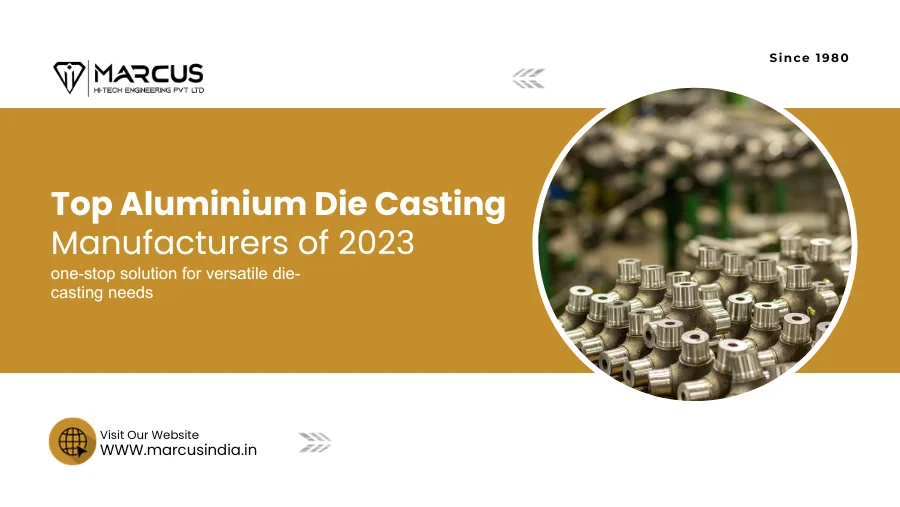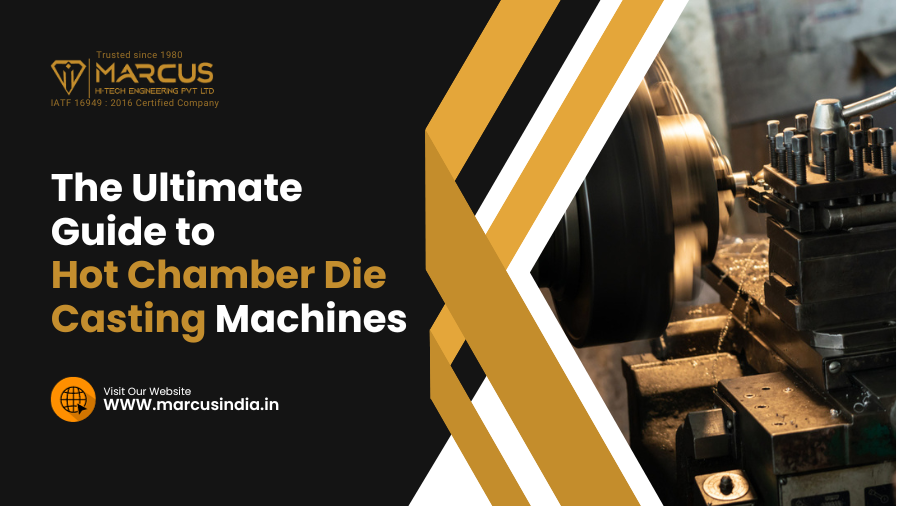
The manufacturing industry requires metal products with the highest accuracy and precision; making sure of that is the process popularly known as Die Casting. Die Casting helps manufacturers produce high-quality metal products with high dimensional accuracy and support with complex thin-walled metals.
Understanding Die Casting
Die Casting is a Metal Casting Process in which metals with high melting points are injected into the mold cavity under high pressure. The commonly used metals in this process are zinc, aluminum, copper, lead, tin, and magnesium.
Die Casting Process
Die casting involves a process in which molten metal is forced into a mold cavity under high pressure.
- The process starts with the melting of the metal in a furnace. Once the metal reaches the desired temperature, it is injected into the die cavity using a high-pressure injection system.
- The molten metal is rapidly forced into the mold cavity, which is shaped like the final part.
- After the cavity is filled, the molten metal is allowed to cool and solidify within the die, this process takes seconds to minutes.
- Once the metal has solidified, the die opens, and the part is ejected from the die cavity.
- In the last step, cutting, grinding, or machining, are performed to achieve the final dimensions and surface finish.
Die Casting Types

There are many types of die casting processes, however, the two most popular are—-Hot-Chamber Die Casting and Cold-Chamber Die Casting.
1. Hot Chamber Die Casting
Hot Chamber Casting is only suitable for alloys having low melting points like lead, tin, zinc, and a few magnesium alloys.
In this, an alloy is melted in a furnace within the equipment. This process offers a longer tool life and requires minimum safety measures. The casting cycles are usually shorter, resulting in high productivity and the company’s manufacturing.
Process
In a Hot Chamber Die Casting Machine, the fixed die half is called a cover die, which is mounted to a stationary platen (large plate to which each die half is mounted) and aligns with the gooseneck. The machine pushes the moving platen towards the cover die and holds it closed with great pressure until the molten metal is injected.
The plunger remains in the “down” position to hold the pressure while the casting “cools off.” After solidification, the plunger is retracted and the cast part is either ejected, manually removed from the machine, or pushed off the cover die. This ejection system, which includes an ejector die and ejector pins, allows the casting to be pushed out while releasing the die halves.
2. Cold Chamber Die Casting
Cold Chamber Die Casting Machine is used to manufacture metals with high melting points such as aluminum, brass, and copper. In this process, the melting alloy is melted in a furnace placed outside the equipment. The cycles are usually longer in this process.
Process
In contrast to Hot Chamber Die Casting, molten metal is ladled from the furnace into the shot chamber through a pouring hole. While the general function of the cold chamber machine is similar to the Hot Chamber, the Cold chamber works with a horizontal orientation and does not have a gooseneck.
3. Low-Pressure Die Casting
A die cast mold is filled with molten metal under low pressure. The castings in such a process are highly pure due to the little to no slag responsible for the impurity. This method reduces the porosity in the castings which results in denser and more structurally sound products.
4. Gravity Die Casting
In gravity die casting a liquid metal is poured into a metallic mold without any external force. It is used for producing metal products from nonferrous alloys like aluminum, brass, and copper. It utilizes the force of gravity to facilitate the metal’s flow into the mold. It is commonly used in industries such as automotive, aerospace, and electronics, where high-quality, complex components are required.
5. Aluminum Die Casting
It is a process for the production of complex and lightweight aluminum parts and components. It offers several advantages and is commonly employed in various industries, including automotive, aerospace, electronics, and consumer goods. Aluminum Die Casting is a versatile and efficient manufacturing process that combines the advantages of lightweight materials, complex geometry capabilities, high mechanical properties, and cost-effectiveness, making it a valuable choice for a wide range of industries and applications.
Advantages of Die Casting Across Industries
- Automotive Industries
Die casting helps in the production of lightweight yet strong products which is particularly important in the automotive industry, where reducing vehicle weight is essential for improving fuel efficiency and meeting emission standards.
Die casting can create complex and intricate automotive parts with precision. The components are known for their strength and durability which makes them ideal for critical automotive applications.
- Aerospace Industries
In aerospace, die casting is used to produce lightweight yet strong structural components for aircraft. Aluminum and Magnesium alloys are commonly used materials in aerospace die casting. These components include parts of the airframe, such as brackets, mounts, and structural members.
Die cast parts in the aerospace industry must meet rigid strength and weight requirements. The process allows for the creation of components that offer a high strength-to-weight ratio, contributing to the structural integrity and performance of the aircraft.
- Electronic Industry
Die casting is used to create heat sinks and other thermal management components. These parts help dissipate heat generated by electronic components like microprocessors, transistors, and power devices which ensure the reliable and efficient operation of electronic devices. These components provide protection and structural integrity for sensitive electronics.
How Die Casting is Shaping the Manufacturing Industry
die casting plays a significant role in shaping the manufacturing industries as:
- Die casting helps in the production of complex and intricate parts with high precision. Manufacturers can create parts with features like thin walls, undercuts, and fine details, which would be difficult or impossible to achieve through other methods.
- It provides consistent and high-quality results with each cycle. This reliability is crucial in industries like automotive and aerospace, where precision and consistency are essential.
- Die casting can be used with a wide range of materials, including aluminum, zinc, magnesium, and copper-based alloys. This versatility allows manufacturers to choose materials that meet specific performance, weight, and cost requirements.
- It is used in a wide range of industries, from automotive and aerospace to electronics, medical devices, and consumer goods. Its versatility allows it to serve various sectors and adapt to changing market demands.
- It can produce parts with integrated features, reducing the need for assembly and welding. This simplifies manufacturing processes, enhances reliability, and reduces labor costs.
- The minimal scrap and excess material by this method can often be recycled. This aligns with sustainability goals by reducing waste and environmental impact.
- It is particularly well-suited for high-volume production. It can produce a large quantity of parts quickly and consistently, reducing production costs per unit.
- This contributes to lightweight initiatives by producing parts with a high strength-to-weight ratio. This is crucial for industries like automotive and aerospace, where reducing weight improves fuel efficiency and performance.
Die casting plays a vital role in the manufacturing industry by offering efficient, cost-effective, and versatile solutions for producing high-quality components. As manufacturing technology and materials evolve, die casting plays an increasingly vital role in meeting the demands of modern production.
Exploring the Key Benefits of Die Casting for the Manufacturing World
- Durability and Safety: Safety is crucial in the automotive industry, and die-cast components are critical in ensuring vehicle safety. Die-cast parts, such as brake components and structural elements, provide exceptional strength and durability, enhancing vehicle safety standards.
- Customization and Innovation: Die casting empowers automotive manufacturers to innovate and customize vehicle designs. Whether creating unique exterior trim elements or crafting specialized interior components, die casting allows for flexibility and creativity in design while meeting stringent performance requirements.
- Sustainability: As the manufacturing industry embraces sustainability, die casting aligns well with eco-friendly practices. The efficient use of materials, recyclability of alloys, and reduced energy consumption during the die casting process contribute to a more sustainable automotive manufacturing process.
Also Check: Advantages of Die Casting in Modern Industry
Summing it up
Die casting has greatly improved manufacturing, making it faster and more efficient across various industries. This method offers advantages to the aerospace, electrical, construction, and appliances sectors.
By teaming up with a suitable die casting supplier, manufacturers can obtain high-quality components that are precise and reliable for their projects. One dependable partner is Marcus Hi-Tech Engineering, renowned for their innovative die casting techniques and unparalleled outcomes.
FAQs
Die casting is a metal casting process that involves injecting molten metal into a mold cavity under high pressure. The metal solidifies to create a precise, complex, and high-quality part. It’s a versatile manufacturing method used for a wide range of applications.
Die casting can be used with various metals, including aluminum, zinc, magnesium, and brass. The choice of material depends on the specific requirements of the part being produced.
Die casting offers several advantages, including excellent dimensional accuracy, high production efficiency, and the ability to create intricate and thin-walled parts. It is also cost-effective for large-scale production.
There are two primary types of die casting:
Hot Chamber Die Casting: Suitable for materials with low melting points like zinc. In this method, the injection mechanism is submerged in molten metal.
Cold Chamber Die Casting: Used for materials with high melting points like aluminum and magnesium. Here, the molten metal is ladled into the injection chamber.









